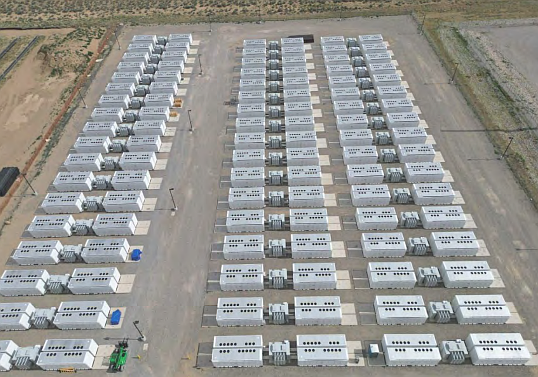November 7, 2025 at 1:21 p.m.
Attendance was sparse at last week’s administrative law hearing to review the environmental assessment as part of the permit sought for a cluster of batteries, proposed for the south edge of the city of North Branch, just east of County Road 14 and north of Jensen Road.
Less than a dozen made up the hearing audience, in the main room of the old Lent Township Hall. State Senator Mark Koran was there, along with state agency officials and the administrative law judge. This phase of the permitting process also included a remote on-line hearing the next day.
The review of the environmental assessment of the battery storage is done under the authority of the Minnesota Public Utilities Commission. The Office of Administrative Hearings has assigned Administrative Law Judge Jon Mortenson to oversee gathering of information, to take testimony and rule on if the environmental details are sufficient. Mortenson said he must issue his report no later than January 20 2026.
The PUC is slated to vote on the permit in March 2026 and the battery complex project schedule calls for it to be operational in early 2027.
The energy company DESRI LLC proposes to install solar power energy storage batteries on about 10 acres on the fringe of the North Star solar array, which covers nearly 1,000 acres.
Energy from the array fields is linked now to the Xcel Energy substation on County Road 14.
The lithium iron phosphate batteries have shown themselves to be invaluable components supporting the alternative energy scene, explained DESRI project manager Joel Puritz. They “...create an environment of reliable energy” and can be directly tied into an electric system (like the North Branch site) or built as a stand alone facility.
The battery housings are about 12 feet tall (keeping them shorter than grown trees) and are about the size of a large ice-fishing house. Unlike laptop batteries— these batteries are not meant to be portable and risk of fire is “incredibly small” Puritz stated.
The facility is now seeking a permit to store 100 MW, which has been increased from initial plans for 80 MW presented earlier.
The facility ideally has a lifespan of 30 years.
There will be a maximum of two operations persons working at the finished site.
As the project is installed the environmental analysis estimates eight semi truckloads of components moving in and out of the site daily. There could also be up to 60 light duty trucks for workers and deliveries, moving in and out. The project will take 9 to 12 months to complete and all totalled, is valued at $172 million. This includes money to be escrowed (or put in a surety bond) for decommissioning the facility when it becomes obsolete.
Expect towers to be included with transformers and pole structures for telecom functions like SCADA communications.
Sam Weaver, of the PUC, wrote the environmental plan. It requires the applicant to dress avoiding wetlands, noise levels of batteries, screening, wildlife habitat, outages and emergencies and to provide annual reports to the state.
The Department of Natural Resources has had input on species of wildlife that may be impacted.
Puritz said screening is recognized in the plan, and there’s a fence for security and to protect wildlife. The batteries themselves have auto shutdown and power-up capabilities. They have permanent bases to capture any possible leaching of chemicals from the battery housing.
Puritz said local first responders have been included in learning the layout, and are being educated on training and special tactics to respond to any future battery incident.
A citizen asked about who covers the expense of any specialized firefighting equipment that area departments might need. Purtitz said the permit will be written to include not imposing local financial burdens.
These are not EV battery types, he added.
The storage batteries have physical thermal protections and automatic sealing functions so the threshold for fire is far beyond devices using portable lithium battery power. “DESRI will work with departments to see to it that they are certified and prepared to respond,” Puritz stressed.
The PUC review coordinator Scott Ek also told those at the hearing, the PUC permit requires an EMS plan.
The PUC also requires permit holders to agree to provide de-commissioning and any expansion plans.
The approximately 10 acre property involved in the storage permit is zoned agricultural, according to the environmental assessment.
The EA states the company assumes this will change to commercial or industrial/public utility classification when the batteries are operational. The batteries themselves do not “produce” energy so there will be no Minnesota production tax assessed.




Comments:
Commenting has been disabled for this item.